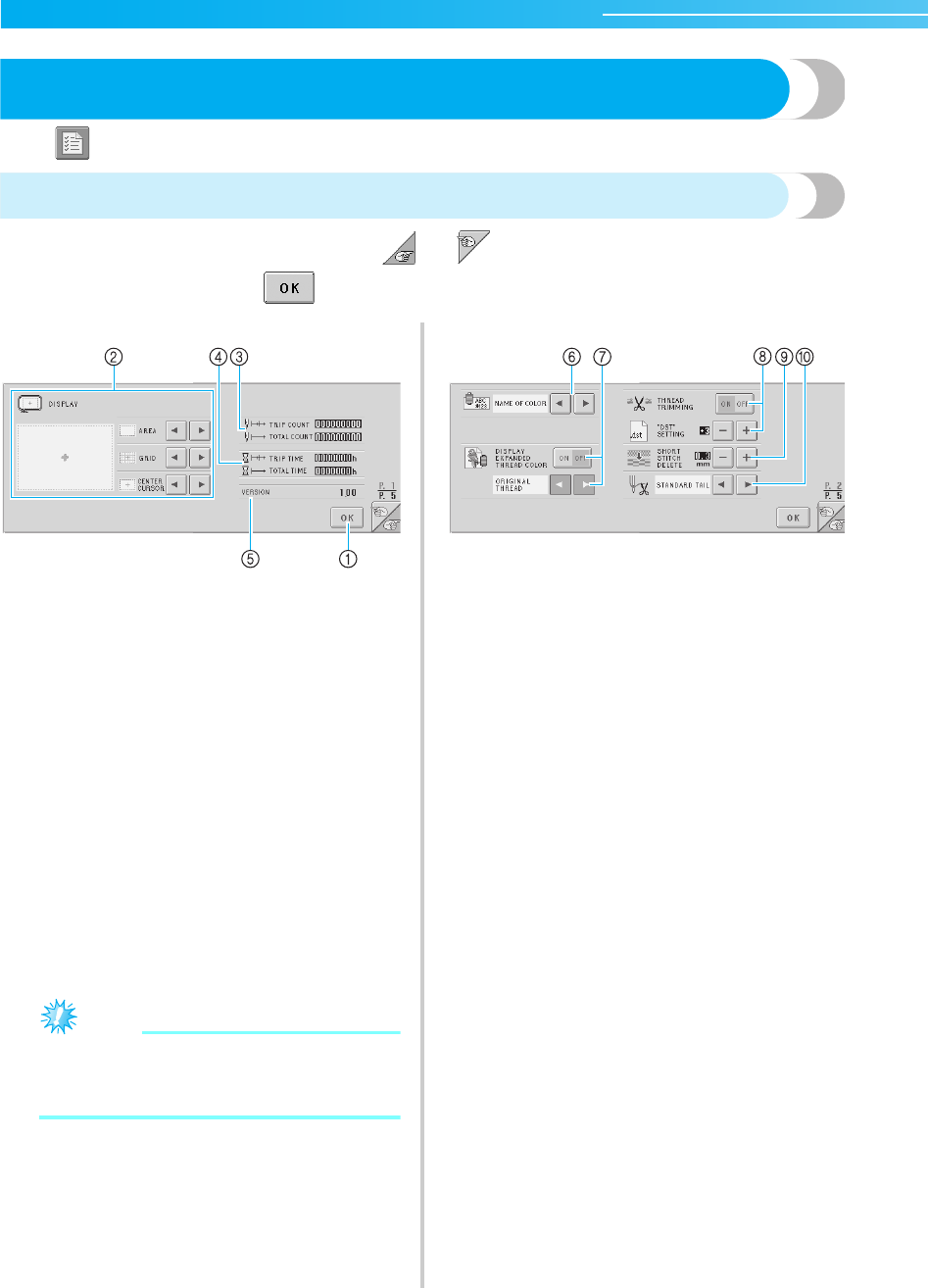
BASIC SETTINGS AND HELP FEATURE —————————————————————————————————————————————
—
140
Using the Settings Key
Touch (settings key) to change many of the basic embroidery machine settings.
Understanding the settings screen
There are five pages in the settings screen. Touch and in the lower-right corner of the screen until
the desired page is displayed. The key appears on all pages.
■ Page 1
1 Touch to quit specifying settings. The settings are
confirmed and the screen that was displayed
before the settings key was touched appears
again.
2 The guides (embroidery frame size, centerpoint
marker, grid and cursor) for the pattern display
area can be specified.
3 The TOTAL COUNT counter shows the total
number of stitches, and the TRIP COUNT counter
show the number of stitches that have been sewn
since the machine's last maintenance.
4 The TOTAL TIME counter shows the total amount
of time that the machine has been used, and the
TRIP TIME counter shows the amount of time that
the machine has been used since its last
maintenance.
Use counters 3 and 4 as a standard for performing
periodic maintenance and for receiving maintenance
for the machine.
5 VERSION
Shows the version of the software installed on this
embroidery machine
Note
● Check with your local authorized Brother
dealer or at www.brother.com for details on
available updates.
■ Page 2
6 CHANGING THE THREAD COLOR DISPLAY
The color information in the thread color
sequence display and the needle bar thread
information can be switched to the color name,
the thread color number or the sewing time, refer
to page 145.
7 DISPLAY EXPANDED THREAD COLOR
The thread colors displayed in the thread color
sequence display and in the needle bar thread
information can be displayed as a color from the
machine's built-in color thread table, as a thread
color from another manufacturer, or as a color
that is created with PE-Design ver. 5.0 as an
original color chart.
If “ON” is selected, choose from the following
three threads, refer to page 146.
Original Thread
Custom Thread 1
Custom Thread 2
8 THREAD TRIMMING/“DST“ SETTING
Specifies whether or not jumpstitches are cut. In
addition, when using Tajima embroidery data
(.dst), you can specify whether or not the thread is
cut according to the specified number of jump
codes. (Refer to page 149.)
9 SHORT STITCH DELETE
Specifies the pitch length of short stitches that are
to be deleted, refer to page 150.
0 THREAD TAIL
Specifies the length of upper thread that remains
threaded through the needle after the thread is
trimmed (length of thread passed through the eye
of the needle), refer to page 150.
Sapphire_chapt6.fm Page 140 Friday, November 18, 2005 11:51 AM


















